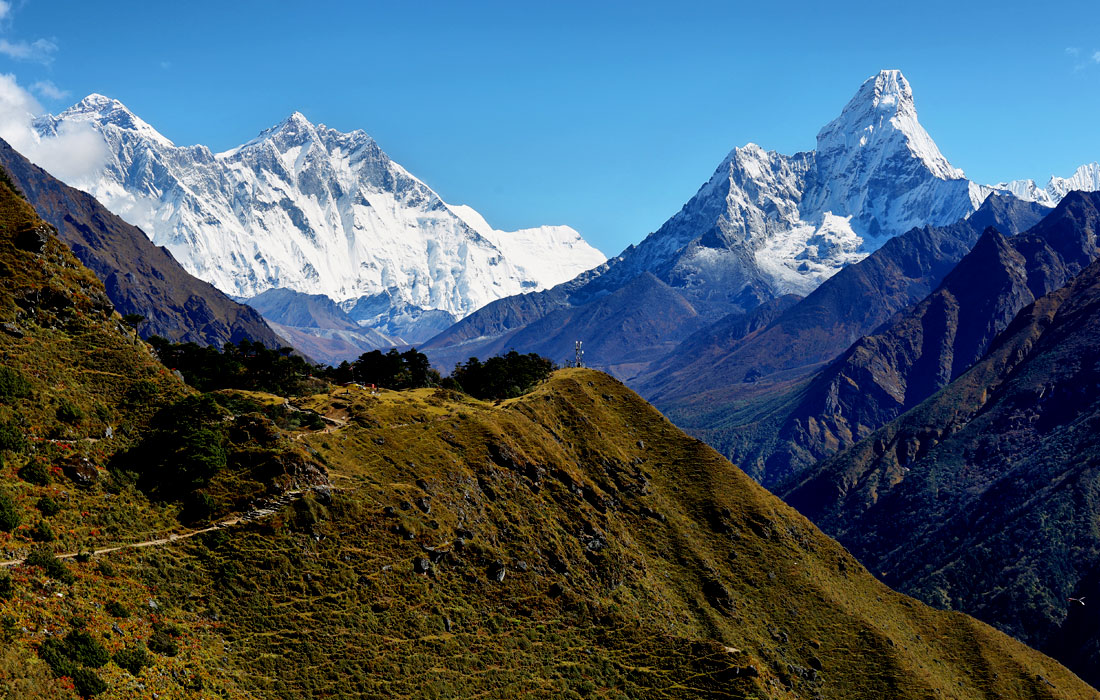If you have not yet trekked to the base camp of Mount Everest, you can opt for Everest Base Camp treks. These treks start in Kathmandu, and are not dependent on flights to Lukla. However, be prepared for an exhausting trek with many ups and downs. If you’re going alone, you’ll need to hire a guide or group to help you along. The accommodations are also basic compared to those found along the main Everest trails.
Trail descends from Khunde
After a short, easy climb, the Everest Treks trail begins to climb. After an hour, the trail shoots up steeply and crosses huge boulders. It is the steepest part of the entire trek. This is where you can rest and acclimatize.
This is the last stop before the climb to Everest. You can spend a night in Khunde. You can find a wide variety of accommodation options in Khunde. The Everest View Hotel is located in Khunde, close to the Namche Bazaar, where you can buy supplies and cash. It’s priced at 500 NPR per night.
The descent from Khunde takes you through a beautiful valley. There is a small chorten at the top of the pass, which marks the junction of the Dudh River and Imja Drengka River, which originates from Everest. The scenery is breathtaking and you can enjoy the views of the Ama Dablam massif from this point.
The Khunde Village is located in northern Nepal and has a monastery. There are also some good places to stop and rest. It is also a good place to visit the local monastery. This village is also located about 10 minutes away from Khunde. You can take the same route back to Namche Bazaar.
The trail then descends to the Khunde valley, where you’ll find Namche Bazaar, a large town with great shops and restaurants. From there, you’ll reach Lobuche, the last settlement on the Everest Treks trail. You can stay in this village for a night if you’d like.
Conditions at Everest Base Camp
Conditions at Everest Base Camp on Everest treks vary a lot depending on the season. The ideal time to trek the region is in the autumn or spring. However, it can be extremely difficult to predict the weather during this season, so be sure to stay up to date with local weather reports. As the Everest region is considered a UNESCO world heritage site, conditions can change quickly.
The coldest season is winter, when temperatures remain below freezing and rarely rise above freezing. Strong winds in the Himalayas further increase the cold. However, with the right warm clothes, you should be fine. The average temperature at Everest Base Camp during this period is ten degrees C during the day, and ten degrees at night.
The best time to trek to Everest Base Camp is during the spring months of April and May. Though the region remains cold during the winter months, there are fewer chances of snowfall. During the spring months, temperatures remain stable and there is less chance of rain. This means less chance of fog and more visibility!
Although the conditions at Everest Base Camp are always a challenge, there are certain things to remember when planning your trek. The monsoon rains will decrease by the end of September. Besides this, the air will be dry, which means less risk of flight cancellations. If the weather conditions are right, you’ll be able to fly regularly to Lukla, which is a good thing.
Permits required for Everest Base Camp trek
If you’re thinking about doing the Everest Base Camp trek, you should know that you’ll need to obtain the necessary permits. These are much like licenses that are needed for entering certain areas of the world. A reputable trekking company can help you obtain these permits for the trek and make the experience more rewarding for everyone.
You’ll need two permits for this trek: the Sagarmatha National Park entrance permit and the Khumbu Pasang Lhamu Municipality permit. The former can be bought from a variety of places, while the latter can be purchased only at specific locations. You can get these permits from HopNepal, which provides assistance with the permit process.
To get an Everest Base Camp permit, you will need a passport with at least six months’ validity, two passport-sized photos and details. You will also need to fill out a form for the Gaurishankar Conservation Area. The latter is only required if you are planning to climb Mount Everest from Jiri or Salleri.
You’ll need to obtain a SNP permit in Kathmandu before boarding your flight to Lukla. This permit allows you to trek to the base of Mount Everest. It also protects the environment. As part of your EBC Trek, you’ll also need a Gaurishankar Conservation Area permit, which will allow you to hike in the Gaurishankar Conservation Area. These permits are only issued to those who meet the requirements. The process is well-managed.
